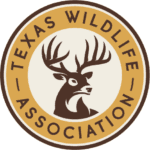
Distance Learning Programs:
– Wetland Ecosystems – Discover how wetland ecosystems, such as swamps and marshes, are important to the water cycle and provide habitat for a great diversity of wildlife. Runtime: 18 minutes
Classroom Lessons:
– Observations with Leopold, K-5
– Observations with Leopold, 6-8, Biology, Environmental Science
– Texas Ecoregion Puzzle, K-3
– Texas Ecoregion Puzzle, 4-8, Aquatic Science
Texas Bird Bingo – Upper Texas Coast , Central Texas Coast , Lower Texas Coast
Texas Bird Bingo is a collaboration between Texas Parks & Wildlife magazine and Audubon Texas.
Texas Coastal Bird Explorer
Courtesy of Audubon Texas
Chasing the Tide
Video and Support Materials courtesy of PBS Learning Media for Teachers
Great Texas Coastal Birding Trail – Upper Texas Coast , Central Texas Coast , Lower Texas Coast
Courtesy of Texas Parks & Wildlife Department
Activity Pages
Courtesy of Exploring Nature
Coyote
– Drawing Lesson
– Labeling Page
– Tracks
Sea Turtle
– Drawing Lesson
– Effect of Human Development
Whooping Crane
– Coloring Page
– Labeling Page
Social Studies Connections
Grades 4 and 7
Geography
Find your county on the Gould Ecoregion map – which ecoregion do you live in?
Identify, locate, and describe the physical regions of Texas (Mountains and Basins, Great Plains, North Central Plains, Coastal Plains), including their characteristics such as landforms, climate, vegetation, and economic activities; and compare the physical regions of Texas (Mountains and Basins, Great Plains, North Central Plains, Coastal Plains).
Identify cities within the Gulf Prairies Ecoregion
– explain the geographic factors such as landforms and climate that influence patterns of settlement and the distribution of population in Texas, past and present; and identify and explain patterns of settlement such as the location of towns and cities in Texas at different time periods.
– identify ways in which Texans have adapted to and modified the environment and explain the positive and negative consequences of the modifications; and explain ways in which geographic factors such as the Galveston Hurricane of 1900, the Dust Bowl, limited water resources, and alternative energy sources have affected the political, economic, and social development of Texas.
Within the Gulf Prairies Ecoregion – describe ways people have adapted to and modified their environment in Texas, past and present, such as timber clearing, agricultural production, wetlands drainage, energy production, and construction of dams; explain reasons why people have adapted to and modified their environment in Texas, past and present, such as the use of natural resources to meet basic needs, facilitate transportation, and enhance recreational activities; and compare the positive and negative consequences of human modification of the environment in Texas, past and present.
Economics
– identify how people in different regions of Texas earn their living, past and present;
– explain how physical geographic factors such as climate and natural resources have influenced the location of economic activities in Texas;
– identify the effects of exploration, immigration, migration, and limited resources on the economic development and growth of Texas; and
– explain how developments in transportation and communication have influenced economic activities in Texas.
6644 FM 1102 : New Braunfels, TX 78132
Phone: (210) 826-2904
Toll Free: (800) 839-9453
Fax: (210) 826-4933
© 2024 Texas Wildlife Association